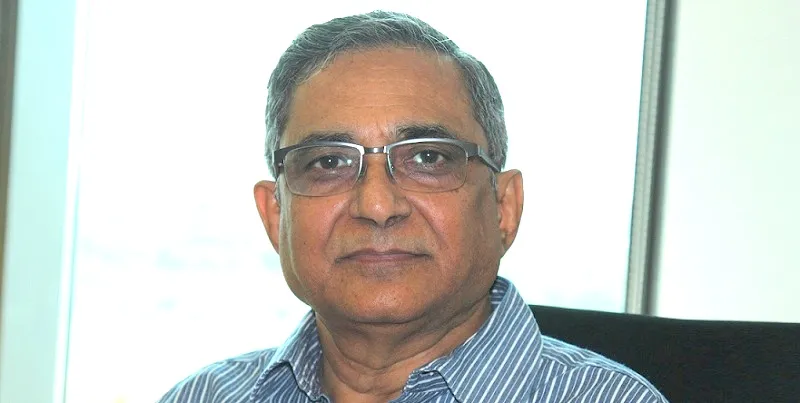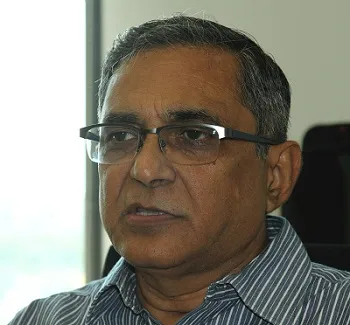I cannot understand the problems with tax collection at source which e-commerce companies are imagining: GST Network Chairman Navin Kumar
The GST Act got the President’s assent on 8 September. Vivian Fernandes interviews the Chairman of GST Network, Navin Kumar to find out its state of preparedness.
Q: Is the GST Network ready for an April 2017 rollout?
Ans: We are working on application development and infrastructure. We had started in November 2014. Last year we identified Infosys as our IT partner through national bidding. The first part of the application is going to be open to taxpayers next month. The network be ready by next January end. We will have a beta run in February and March.

Q: How complex is the task that GSTN will handle?
Ans: At the moment the jurisdiction of service tax, central excise and VAT is divided between states and the centre. To start with we are expecting about eight million tax payers. The task is gigantic. It is complex because three taxes are coming together. The architecture has been designed for very large concurrency (number of transactions at any moment).
Q: Obviously, we are not re-inventing the wheel. Other countries have GST. Have we imported their systems and tweaked them for our requirements?
Ans: It is not like that. It never happens. Even for commercial taxes now the software the states are using is not the same. Different states have different formats and procedures. Our GST is unique. It is a dual tax, there are so many states, and the processes of VAT, service tax and central excise have to be harmonised. All that is being imported is the equipment.
Q: What kind of redundancy has been built in so there is no downtime?
Ans: We have one data centre here in Delhi and one in Bengaluru. They will act not only as disaster recovery for each other. They will both be active. Whatever data comes on one system will be replicated on the other. To make sure that there is zero data loss, in Delhi itself we have what is called a near data centre. Similarly in Bengaluru. In all we will have four data centres. Because of the proximity here there will be no data loss. As soon as data is written on the main data centre it will also go to the near data centre. The replication in Bengaluru will take some time.
Q: How many tax payers can the system accommodate at its peak? Is it modular?
Ans: It is scalable and modular. We are using open source systems. We are working on 60,000 concurrencies, which is very high. We can go up to 13 million taxpayers.
Q: GSTN has taken a loan of Rs 550 cr from IDFC Bank. What is the total cost? Is the network financed mainly with debt, since the equity component is quite low?
Ans: We have a small capital base. The contract we have given to Infosys is for Rs 1,380 cr. Of which Rs 500 cr is the capital expenditure before roll-out. We are borrowing for this part. We will be charging user fees once the network is operational. It will meet our operational expenses. User fees will be charged based on users (tax payers and officials). Government has said it will pay the charges on behalf of the users. The GST bill says charges could be levied on both tax payers and officials. The government felt it was not appropriate to charge the users. We will charge per tax payer per return.
Q: Is this be a profit-making company?
Ans: This is a not-for-profit company. That does not mean we will not earn profit. It will not be distributed. So we will generate profits to the extent required to create a reserve.
Q: Some e-commerce companies had an apprehension regarding tax collected at source from their vendors. They fear that if the tax deposited with the government is not reflected in the accounts of the deductees, they will be taken to court.

Q: Will there be instantaneous set-off of GST paid and charged?
Ans: Every month after the due date our system will analyse whether the data submitted by tax payers matches the accounts given by their sellers and purchasers. The tax liability will be calculated on this basis. Any mismatches will be thrown up and flagged.
Q: There are news reports of huge spending by GSTN, supposedly to the tune of Rs 2,500 cr
Ans: People have been speaking without facts. The project cost is Rs 1,380 cr. Add to that our own expenses. If we add the reserves we want to create it will amount to Rs 2,500 cr over five years. Every year we will be collecting revenues of around Rs 500 cr. In these three years we have spent Rs 130 cr. People have been saying we have spent Rs 4,000 cr. Who is going to give us that?
Q: Will states have a parallel network?
Ans: The network requires a front-end where taxpayers can come and file their returns. We will pass on the data to the tax authorities. Ours is a pass-through. The centre and states need to have their own systems to receive this data for assessment, audit and adjudication. The Central Board of Excise and Customs said they would set up their own back-end system. All the states initially said the same. We did a study and found that many states would not be able to build their systems in time. The revenue department convened a meeting. Twelve states asked us to set up the backend for them. Since then 10 more states have told us to accommodate them. The remaining states and the CBEC are working on their own systems. We have been holding workshops with practically all the states ever month for better coordination. All we are saying is if you want your system to talk to ours, these are the rules.
Q: Have all the major states given the work to GSTN?
Not all. States like Tamil Nadu, Karnataka and Maharashtra are doing on their own.
Q: How will businesses have to prepare. Will they have to upgrade their IT systems?
Ans: They will have to because the processes have changed. The accounting software companies are already at it.
Q: Can an app be downloaded?
Ans: We are giving an offline tool. That will enable them to file their returns. We have had interactions with ITES companies and we have asked them to come up with innovative solutions. The response has been good. We are also concerned about small tax payers in remote locations. In this system there is no manual operation, except in case of payment of tax over the counter. We will provide connectivity through internet. We are going to appoint GST Suvidha Providers. They have shown us innovative solutions like smartphone-based apps to upload the data.
Q: How do you guarantee security of information?
Ans: All possible security measures which are available across the world, we are putting here. Of course our security system will be operated by Infosys but we are going to have another security operations centre here where we will have another expert body together with our own technical officers to manage.
Q: Can GSTN talk to the income tax network?
Ans: Yes. A few things we will validate online. Our GST ID is based on PAN (permanent account number). It will be verified online. Same with the Directors Identification Number. It will be verified with the MCA (Ministry of Corporate Affairs) online. We are integrating with all the external stakeholders from whom we need inputs. For example, banks.
Q: Will Income tax authorities get income information?
This system will give data of turnover. Our mandate is not only to build this network but also to do analytics to find out trends, frauds and so on.
Q: Are there other uses that you envisage for this system?
Ans: The objective of our system is clear. We have to do registration of tax payers, allow them to file their returns and provide facilities for tax payments. Today when a taxpayer deposits tax, that information remains in the books of the government and in his own books. He does not know what is there in the government’s book. That is revealed only when an audit is done or an assessment is made. For the first time, like income tax Form 26AS where you can see whether the taxes you have paid are reflected or not, we will show the tax payer’s liability in the records of the government ─ this is the payment you have made and this is your ITC utilisation. Our system will give a full account of input tax claimed and allowed.
Q: This organization is going to be quite lean?
As long as we use the services of other IT companies our role is limited to supervising and guiding them. I feel that in course of time we should acquire these capabilities in house.
Q: Why is this a private company?
For any large government IT system who is doing the work? It is either Infosys or TCS or Wipro or Tech Mahindra. The data is with them. In our company the central and state governments have 50 percent of the directors. Our board meetings cannot take place unless half of the directors present are government nominees. Our private shareholders hold 51 percent equity but in a 14-member board they have only three directors. Our company has been structured intelligently so it can follow the best practices of the private sector.







